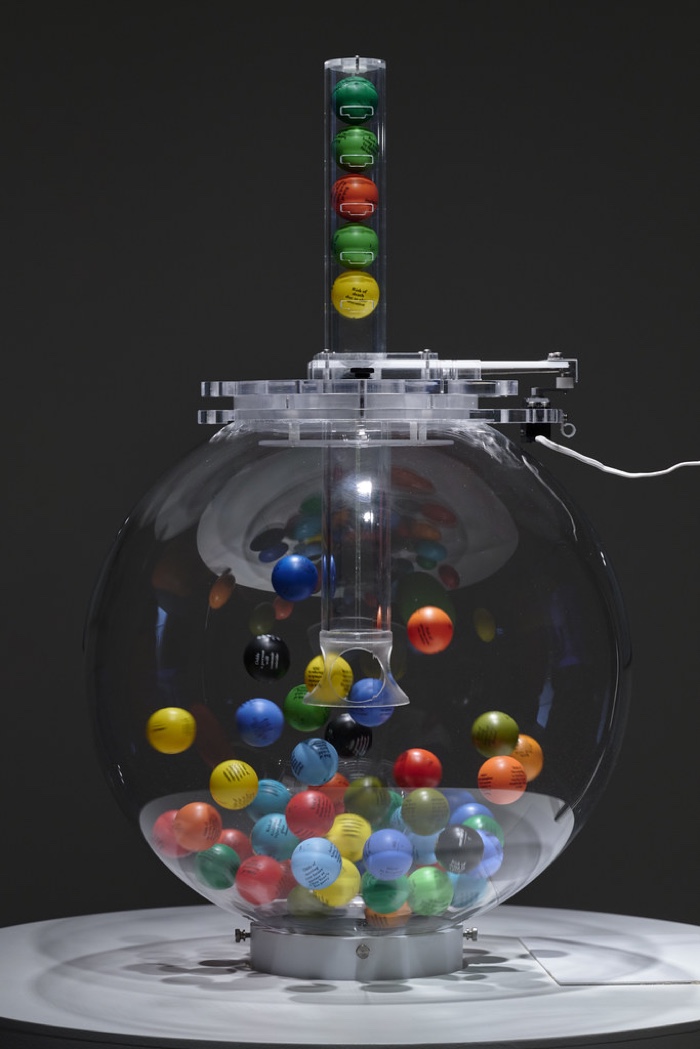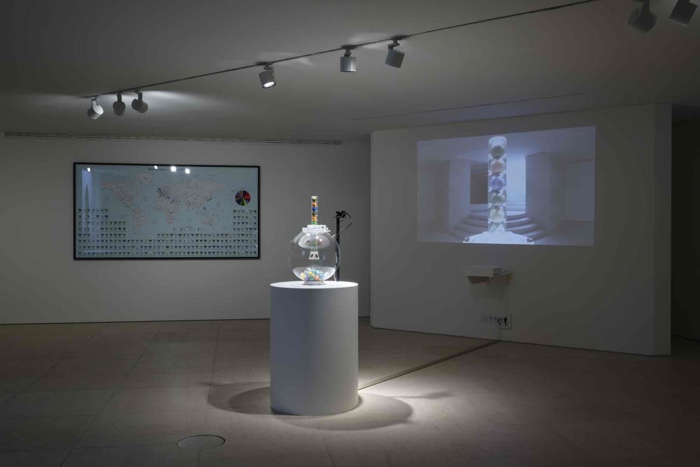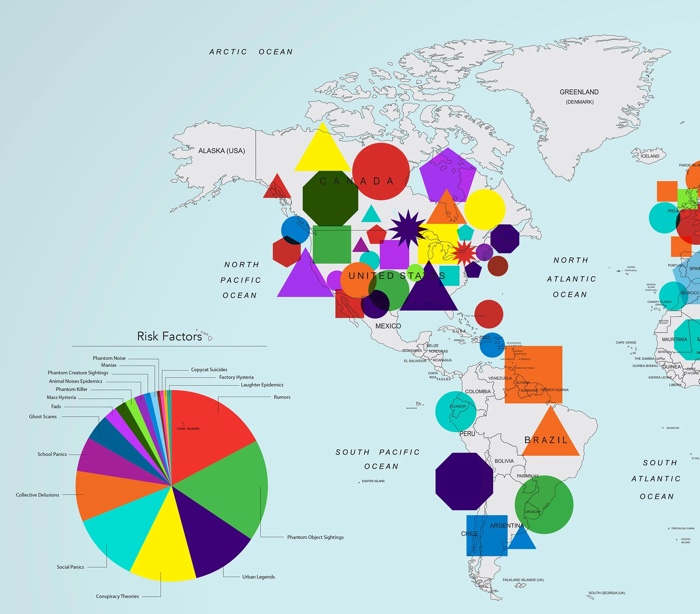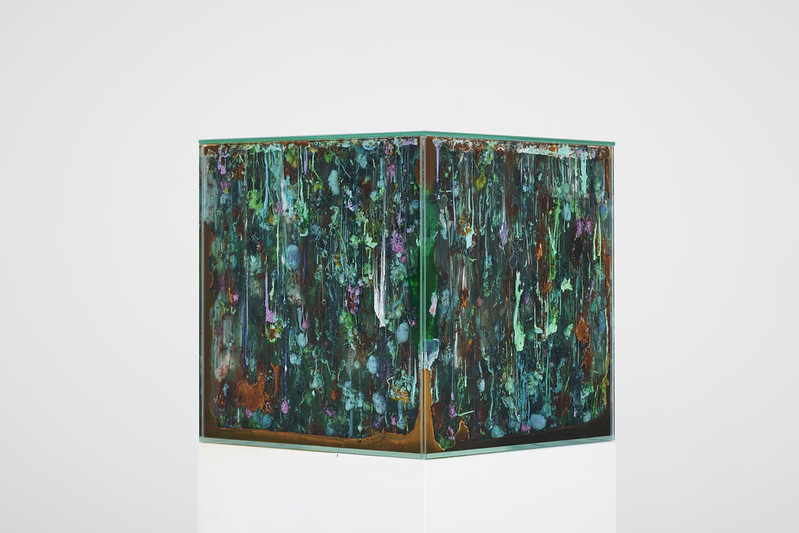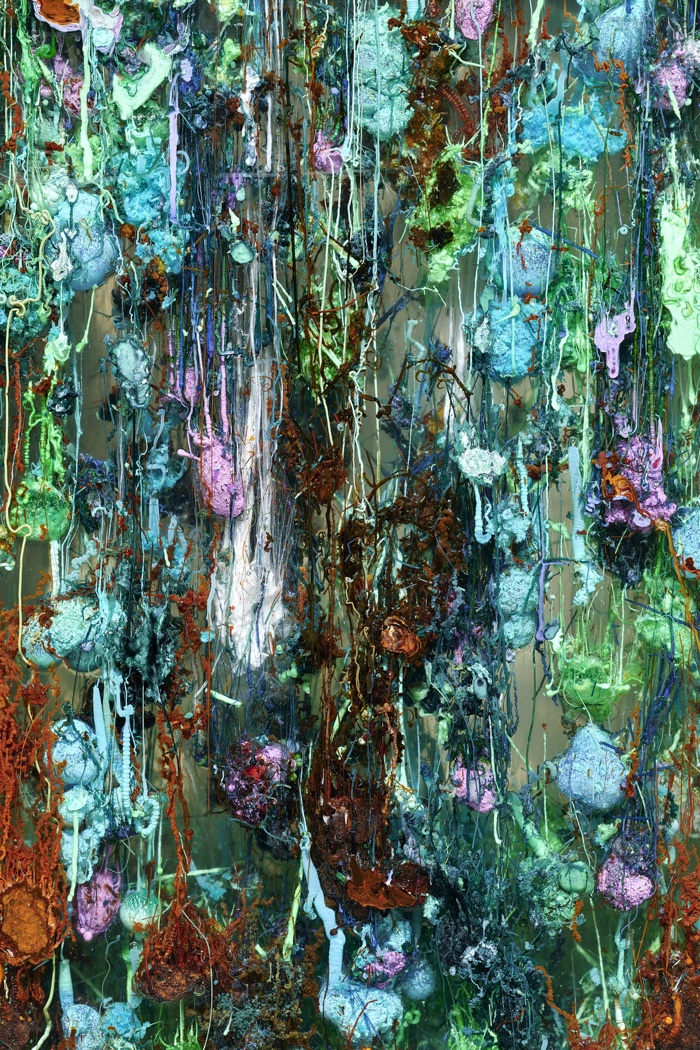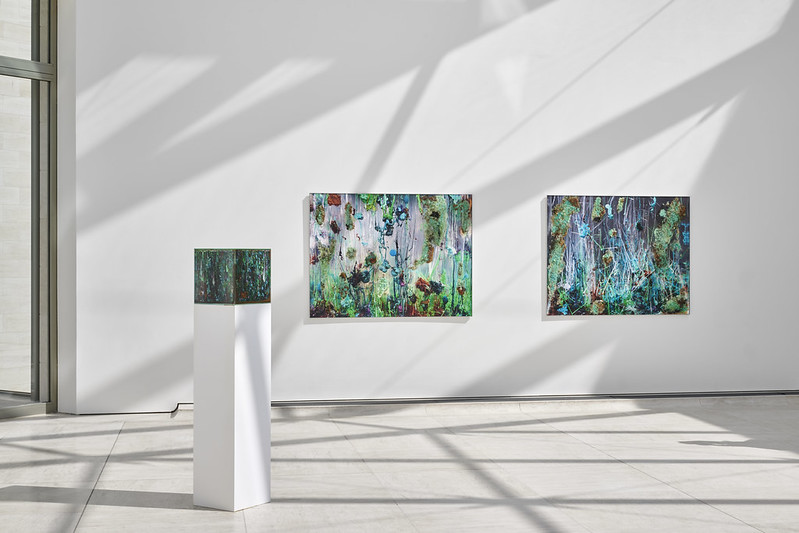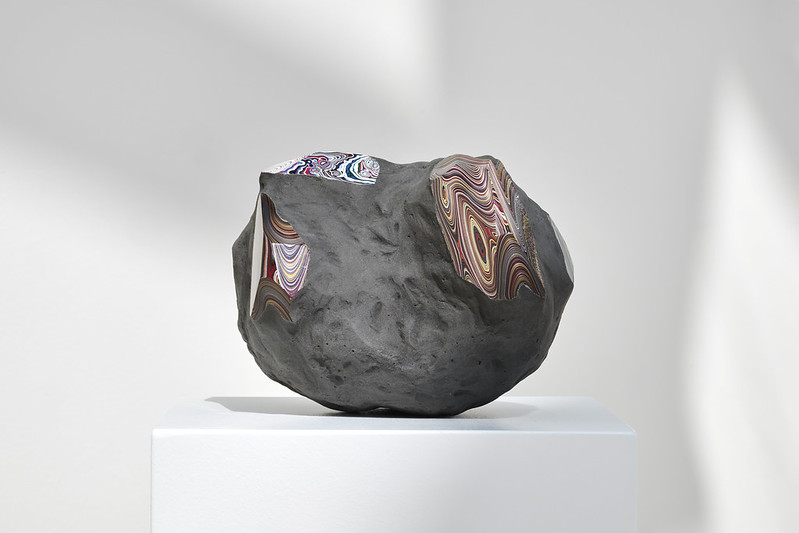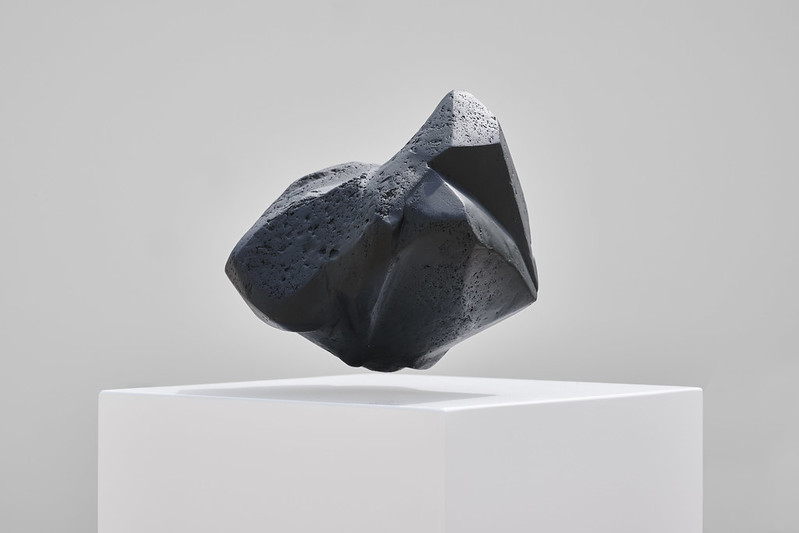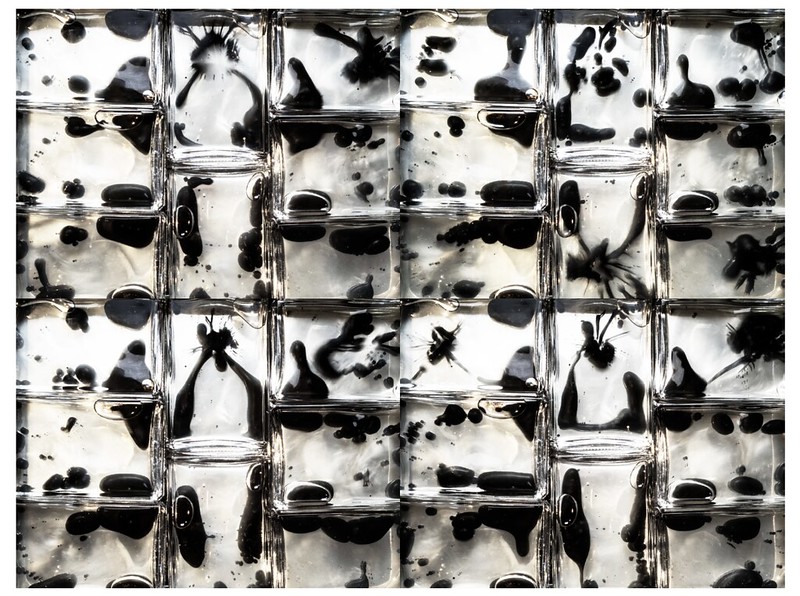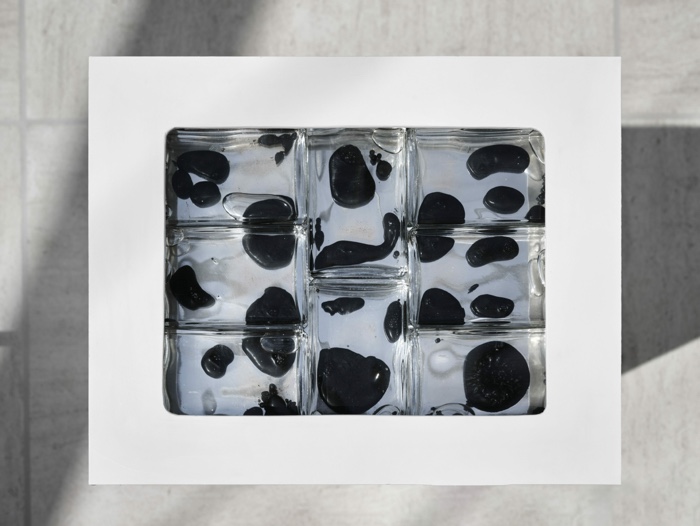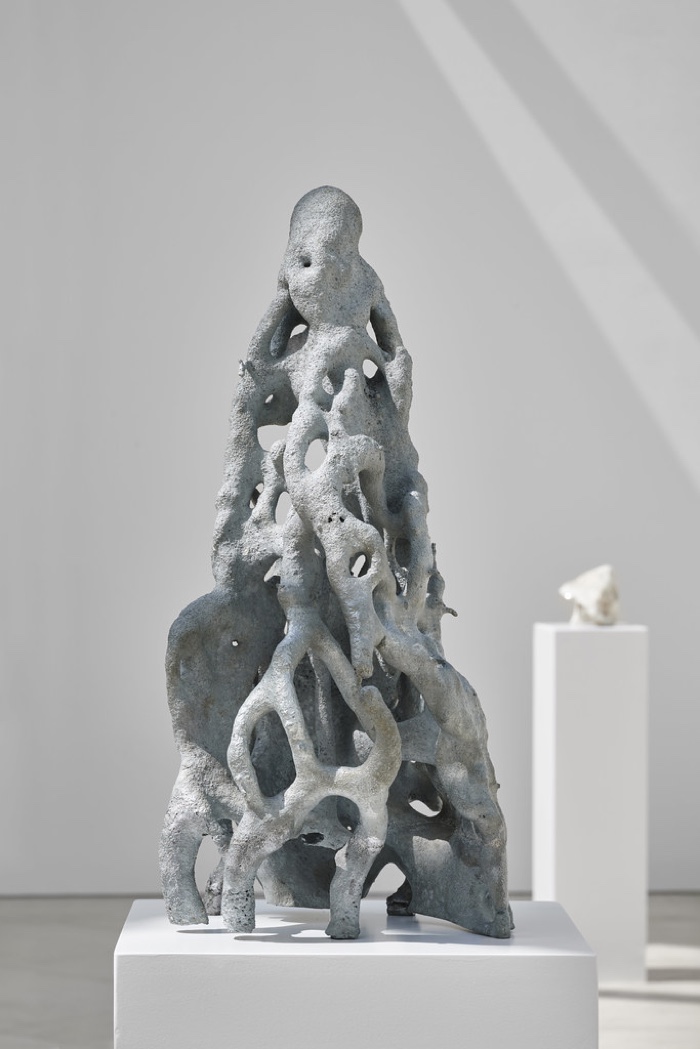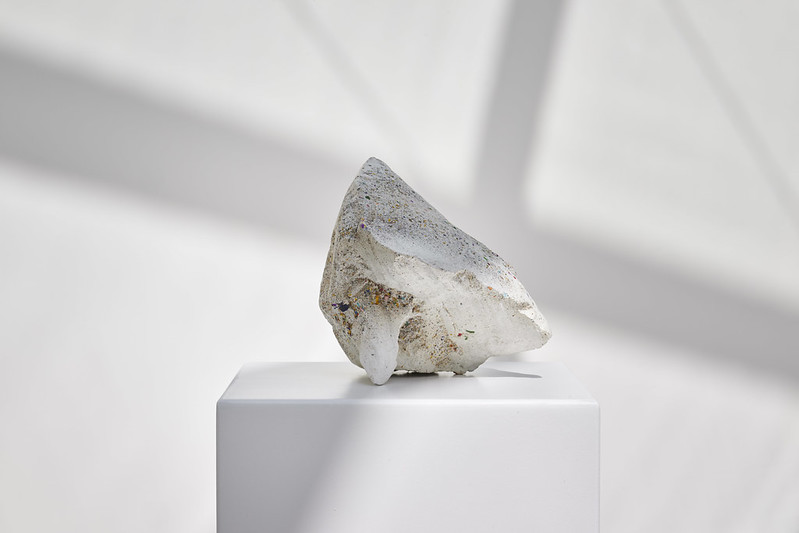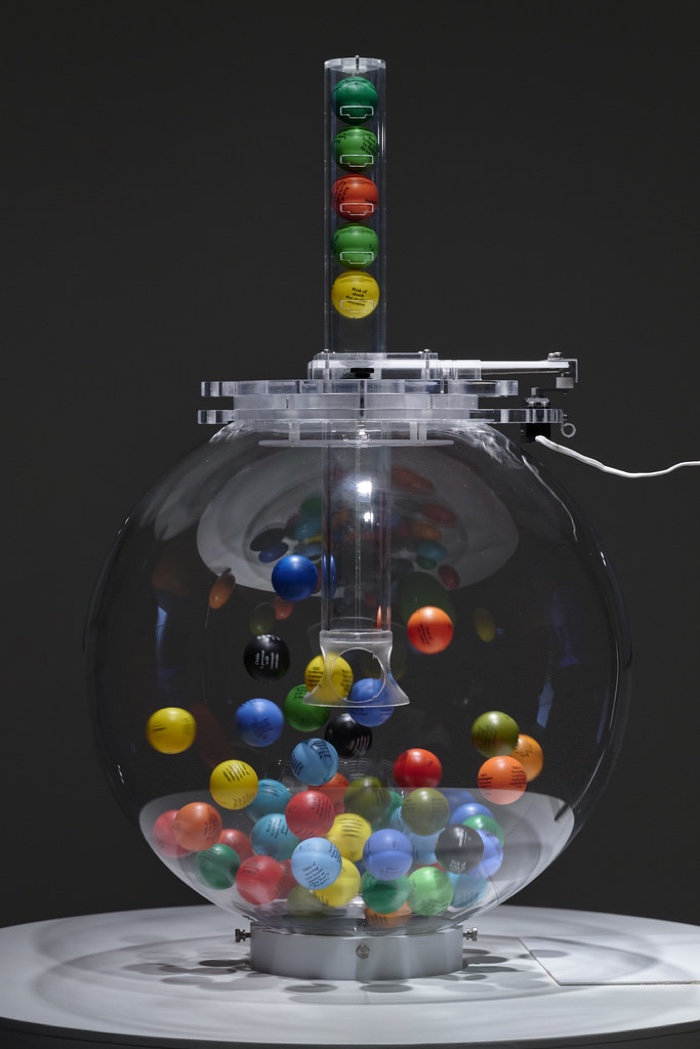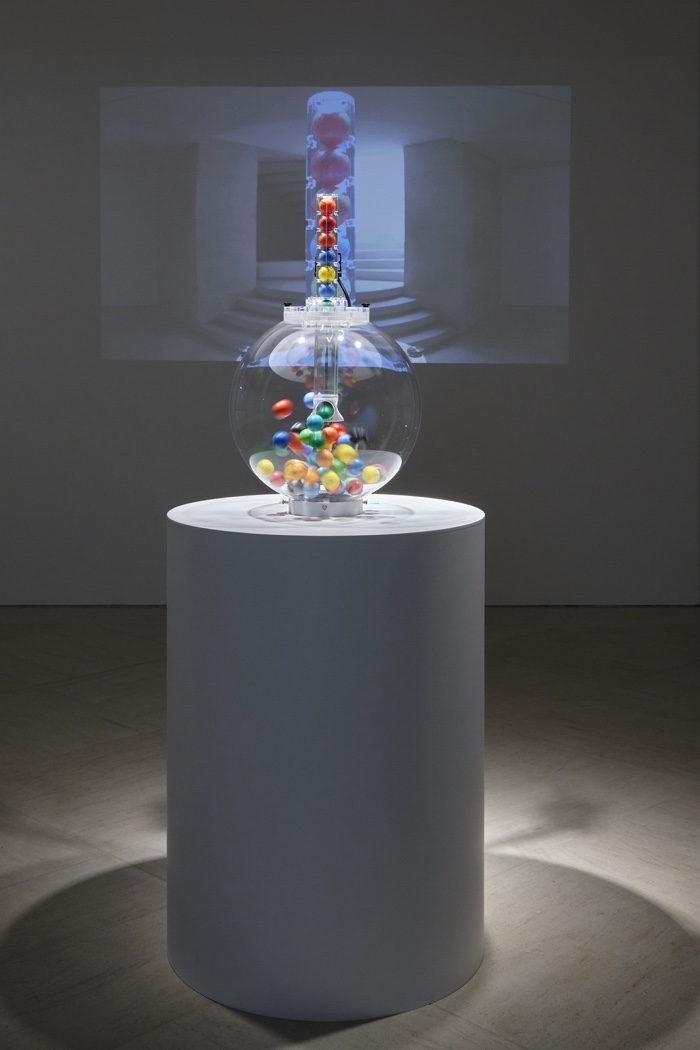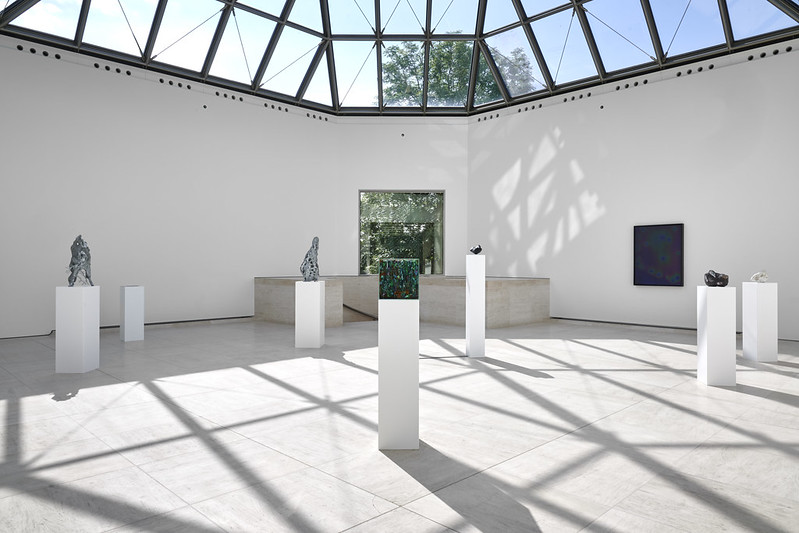Many of us think that we inhabit a linear, coherent, anthropocentric world. Agnieszka Kurant rejects this simplistic belief. Today’s world is increasingly being shaped by a multitude of intelligent agents: some are human, but most are not. They are animals, of course, but also microorganisms, viruses, minerals and algorithms. They do not exist in silos. They hybridise, they waver between the biological, the mineral and the digital, the natural and the artificial, the living and the non-living.
View of the exhibition Agnieszka Kurant. Risk Landscape at Mudam Luxembourg. Photo: Mareike Tocha © Mudam Luxembourg
View of the exhibition Agnieszka Kurant. Risk Landscape at Mudam Luxembourg. Photo: Mareike Tocha © Mudam Luxembourg
Agnieszka Kurant, Risk Management (detail), 2020
Risk Landscape, Agnieszka Kurant‘s solo exhibition at MUDAM in Luxembourg, combines technology, biology, AI, economics and aesthetics to make emerge unpredictable processes and agencies that will guide our futures.
The exhibition is dense and brilliant. You reach it through a corridor that illustrates how various cultures and languages across the globe conceive the future as coming from behind, above or below and not as being in front of us, as Western worldviews do. The ground floor of the pavilion investigates the impact that collective intelligences beyond the human realm have on the evolution of life, climate, geology and economy. And in the basement, the artist exposes how many industries are capitalising on the future by relying on (algorithmic) financial risk management strategies.
Every single work in the show deserves a few lines, but i’m going to look only at some of the pieces i found on the ground floor of the pavilion. These artworks, which make use of various forms of collective intelligence and agency, highlight issues such as the transformation of labour and authorship, invisible mechanisms of exploitation and the emergence of hybrid geological and biological forms.
Agnieszka Kurant, Chemical Garden, 2021–ongoing. Photo: Mareike Tocha © Mudam Luxembourg
Agnieszka Kurant, Chemical Garden (detail), 2021–ongoing. Photo: Mareike Tocha © Mudam Luxembourg
View of the exhibition Agnieszka Kurant. Risk Landscape. Photo: Mareike Tocha © Mudam Luxembourg
Chemical Garden is an aquarium where erratic plant-like crystalline structures emerge from a mixture of inorganic chemicals: copper, cobalt, manganese, chrome, nickel, iron. These metals produce salts that crystallise into ever-changing organic shapes. The beautiful, colourful composition evolves over the course of the exhibition.
The first documented chemical garden was created by chemist and alchemist Johann Rudolf Glauber in 1646. Modern research shows that chemical gardens in hydrothermal vents on the sea floor are a plausible path for the origin of life on Earth.
Some mineralogists today are talking about mineral evolution, postulating that mineralogy on planets and moons becomes increasingly complex as a result of changes in the physical, chemical and biological environment. The theory means that biological and mineral, living and inanimate, are no longer clearly separated. Which in turn changes the definition of what is considered life. And just like inorganic chemicals circulate in the world to produce life forms, they can also ruin entire ecosystems when they are extracted to manufacture computers and mobile phones.
Chemical Garden suggests that evolution is not a linear process and that the borders between biology and geology are blurry.
Agnieszka Kurant, Post-Fordite, 2024. Photo: Mareike Tocha © Mudam Luxembourg
Post-Fordite is a sculpture made of Fordite or “Detroit agate”, a material created through the accumulation and fossilisation of automotive paint at now-defunct car factories in Detroit and elsewhere around the globe.
At the end of Ford’s production lines, each new vehicle would receive a coat of enamel paint. The spray often landed on the ground and other surfaces, leaving layers of bright paint congealed in the manufacturing bay. Over time, the layers of spray would turn into rainbow rocks. After Ford closed, former factory workers and scavengers picked up the masses of hardened paint in the abandoned factories. They then cut, polished and circulated it online where it began to accrue value.
Agnieszka Kurant combined multiple pieces of Fordite with epoxy resin to make it appear like both a geological and archaeological discovery.
The fossilised paint materialises more than a century of hierarchical and collective human labour. The work also envisions future geologies and legacies left behind after the last great manufacturing industries have been replaced by new forms of capitalism based on data, where the entire society contributes to a distributed factory of intangible production.
Agnieszka Kurant, Air Rights 7, 2021. Photo: Mareike Tocha © Mudam Luxembourg
Air Rights 7 is a levitating meteorite. The trick is an electromagnetic field created between the plinth and the object. The small meteorite seems to be frozen in mid-air. Any movement of air can make it move. Its balance and magic are precarious, like prices of property, corporate earnings, stocks and many other elements of the current economy.
The title, Air Rights, refers to the real estate practice of selling the vertical space above a property. The meteorite gives a tangible weight to the intangible and speculative commodity that allows for the creation of value out of thin air.
Agnieszka Kurant, Alien Internet, 2023-4. Photo Mathias Völzke
Agnieszka Kurant, Alien Internet, 2023-4. Photo: Mareike Tocha | Mudam Luxembourg
Alien Internet is composed of ferrofluid. Invented by NASA in 1963, the black inorganic substance contains nanoparticles reacting to magnetic fields. Kurant used it to model a perpetually evolving cybernetic organism, whose shape changes in response to the behaviour and communication of thousands of micro-chipped animals and other organisms worldwide that are linked to the planetary-scale surveillance of wildlife ecosystems.
The work shows how datafication is changing our relationships with more-than-human life forms. Not only does technology help us develop a finer understanding of the behaviour and migration patterns of non-human animals but it also gives us new instruments to exploit them: animals have become forced workers of the digital economy as they help scientists predict natural disasters.
Agnieszka Kurant, A.A.I. (System’s Negative), 2016. Photo: Mareike Tocha © Mudam Luxembourg
A.A.I., Artificial Artificial Intelligence, is a term coined by Jeff Bezos to describe cognitive tasks that are menial for humans but too complex for algorithms or robotics. Workers -often located in the Global South- perform these mind-numbing micro-tasks for pitiful wages. A.A.I. (System’s Negative) doesn’t use humans nor AI, but the collective intelligence of termites.
Kurant outsourced the making of sculptures to termites. She made casts of the interiors of termite mounds by pouring hot zinc into habitats that she found abandoned in the Namibian savannah. Each habitat is unique, a mirror of the collective intelligence of a given insect colony.
Termites are social insects. They are organised in elaborate populations with clear class divisions, like humans. They can be soldiers, workers or “reproductive”. They build monumental structures — the mounds, out of soil, saliva and dung. Each mound is a product of a collective intelligence of often over a million specimens. It is very similar to a human society, collectively creating monuments and other landmarks of culture.
Agnieszka Kurant, Sentimentite, 2022. Photo: Mareike Tocha © Mudam Luxembourg
Sentimentite is a fictional mineral that Kurant created from objects used as currencies throughout human history: shells, bones, cigarettes, washing powder, animal teeth, salt, lithium batteries, books, or electronic waste. Crushed together and moulded into 100 fragments of Sentimentite. The shape of each sculpture was generated from Twitter and Reddit posts related to key moments in our recent history, such as the Arab Spring, the Fukushima disaster, Black Lives Matter protests, the death of David Bowie, the COVID-19 pandemic and the Russian invasion of Ukraine.
The resulting sculpture serves as both a commentary on capitalism and a speculative narrative about the interplay between digital technology and geology (notoriously visible when we talk about the ‘conflict minerals’ used in smartphones).
More images from Agnieszka Kurant. Risk Landscape:
Agnieszka Kurant, Lottocracy, 2024. Photo: Mareike Tocha © Mudam Luxembourg
Agnieszka Kurant, Lottocracy, 2024. Photo: Mareike Tocha © Mudam Luxembourg
View of the exhibition Agnieszka Kurant. Risk Landscape. Photo: Mareike Tocha © Mudam Luxembourg
Agnieszka Kurant. Risk Landscape, curated by Sarah Beaumont, is open until 05 January 2025 at MUDAM in Luxembourg.
